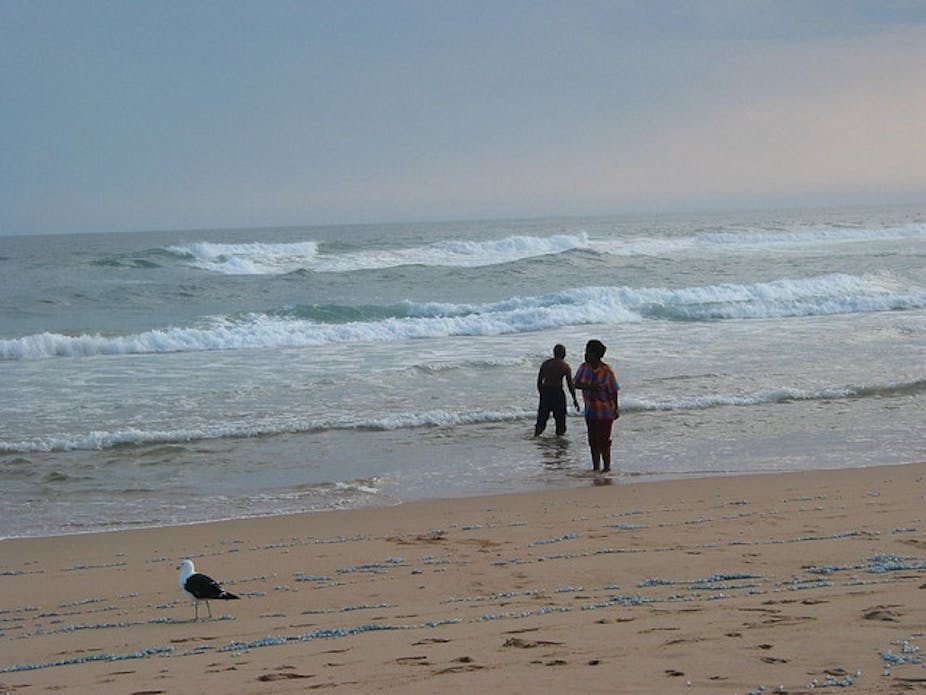There is a huge global demand for clean water, with poor sanitation and water scarcity causing around 768 million people to go without. In an effort to solve the crisis, an international team of scientists have developed a prototype “water chip”, which has the potential to cost effectively desalinise seawater for drinking, bathing and irrigation on a huge scale.
More than 300 million of the people affected by water supply issues live in sub-Saharan Africa. Almost 70% of the population in this area take home less than US$2 a day. This fact, together with the rising cost of fuel, has spawned a growing interest in cost efficient, low energy solutions to the water crisis.
“Traditionally, the answer to desalination has been thermal desalination; a high-capital, high-energy solution that is only suitable where fuel is cheap,” Professor Nidal Hilal, director of the University of Swansea’s CWATER unit, explained.
Now, researchers from the Universities of Texas and Marburg have come up with a completely new approach. Using a technique they call “electrochemically mediated desalination” (EMD), the team is racing to supply affordable, clean water producing technologies to those who need it most.
This technique uses the principles of chemistry to separate charged particles from clean water. The prototype “water chip” takes seawater into a microchannel and separates it into two branches; one with clean water and one with salts. It does so by using an electrode to create an electrical field, which neutralises some of the charged atoms in seawater and creates an ion depletion zone. When charged particles like salts encounter this area, they are redirected into one branch, while water is directed to the other.
At the moment, the EMD “water chip” can run off a 3.0 volt power supply, equivalent to a store-bought AA battery. This separation technique can also rid water of disease-causing bacteria. “It includes the redirection of any charged species, not just simple ions, but also organic matter such as bacteria and viruses,” Tallarek said.
At the time the study was published, the prototype had a desalination capacity of 25%. To achieve clean drinking water, this capacity would need to increase to 99%. But Professor Tallarek said they are already making progress. “A very simple design change allowed us to increase the salt rejection already above 50%,” he said. Importantly, this change will not increase the process’ energy usage.
The team holds high hopes for their technique. “The EMD platform may be prepared with little capital investment and could be implemented in a massively parallel format,” Tallarek said. “Currently, we do not see a limitation in scaling-up. Due to fabrication issues it may even become more cost-effective in a massively parallel design.”
They are not the only ones pursuing this goal. Another alternative to thermal desalination is known as “reverse osmosis” (RO) membrane technology. According to Professor Hilal, RO membranes use only 4 kilowatts to process one cubic metre of water, compared to thermal desalination which requires around 25 kilowatts for the same amount.
The technology harnesses the natural process of osmosis, which involves the movement of low concentrate fluid (unsalted water) toward high concentrate fluid (brackish water or seawater). As its name suggests, RO involves the reversal of this process.
Essentially, RO involves placing a semi-permeable membrane between flows of fresh water and seawater, and applying pressure to the flow of seawater. This forces fresh water through the membrane, while holding back dissolved salts, effectively desalinising the water.

Although RO membrane technology is promising in many respects, it falls down at one key obstacle. “The disadvantage of membranes is that they become blocked or fouled, and this impedes the flow and efficiency. When a membrane is blocked, we need more energy to drive the water across the membrane,” Professor Hilal explained.
He said that the membranes can be fouled when they encounter build ups of calcium carbonate, viruses, bacteria or fungus.
These problems mean the EMD technique looks like it could outpace RO membrane technology. “The electrochemically mediated desalination technique is membraneless and therefore does not suffer from membrane fouling or damage and does not require extensive pretreatment prior to desalination,” Professor Tallarek said. It appears that in the race to solve the world’s water crisis, EMD is the new favourite.

